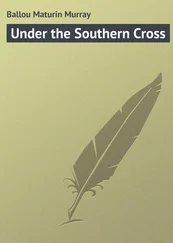Maturin Ballou - Due North - or, Glimpses of Scandinavia and Russia
Здесь есть возможность читать онлайн «Maturin Ballou - Due North - or, Glimpses of Scandinavia and Russia» — ознакомительный отрывок электронной книги совершенно бесплатно, а после прочтения отрывка купить полную версию. В некоторых случаях можно слушать аудио, скачать через торрент в формате fb2 и присутствует краткое содержание. Жанр: foreign_prose, Путешествия и география, на английском языке. Описание произведения, (предисловие) а так же отзывы посетителей доступны на портале библиотеки ЛибКат.
- Название:Due North: or, Glimpses of Scandinavia and Russia
- Автор:
- Жанр:
- Год:неизвестен
- ISBN:нет данных
- Рейтинг книги:3 / 5. Голосов: 1
-
Избранное:Добавить в избранное
- Отзывы:
-
Ваша оценка:
- 60
- 1
- 2
- 3
- 4
- 5
Due North: or, Glimpses of Scandinavia and Russia: краткое содержание, описание и аннотация
Предлагаем к чтению аннотацию, описание, краткое содержание или предисловие (зависит от того, что написал сам автор книги «Due North: or, Glimpses of Scandinavia and Russia»). Если вы не нашли необходимую информацию о книге — напишите в комментариях, мы постараемся отыскать её.
Due North: or, Glimpses of Scandinavia and Russia — читать онлайн ознакомительный отрывок
Ниже представлен текст книги, разбитый по страницам. Система сохранения места последней прочитанной страницы, позволяет с удобством читать онлайн бесплатно книгу «Due North: or, Glimpses of Scandinavia and Russia», без необходимости каждый раз заново искать на чём Вы остановились. Поставьте закладку, и сможете в любой момент перейти на страницу, на которой закончили чтение.
Интервал:
Закладка:
CHAPTER V
Bergen is situated some two hundred miles northwest of Christiania, and may be reached from thence by a carriole journey across the country over excellent roads, or by steamboat doubling the Naze. The latter route, though three times as far, is often adopted by travellers as being less expensive and troublesome. Still another and perhaps the most common route taken by tourists is that by way of Lake Mjösen, Gjöveg, the Fillefjeld and Laerdalsören, on the Sognefjord. This is called the Valders route, and affords by far the greatest variety of scenery. It involves railroad, steamer, and carriole modes of conveyance, and in all covers a distance of at least three hundred and fifty miles. It will be remembered that Bergen was the capital of Norway when it was under Danish rule, and was long afterwards the commercial rival of Christiania. Indeed, its shipping interests we were informed still exceed those of the capital, the verity of which statement one is inclined to question. The period of its greatest prosperity was in the Middle Ages and during the century when the great Hanseatic League flourished, at which time there was a numerous German colony resident here. The town appears very ancient, and naturally so, as it dates back to the eleventh century. Many of the dwellings are quaint with sharp-peaked roofs and gable-ends toward the streets. The boats which ply in the harbor and throng the wharves differ but little from the style of those used by the Norse pirates a thousand years ago, and who congregated in force about these very shores. The oldest part of the city lies on the eastern side of the harbor where the fortress of Bergenhuus and the double-towered Maria Kirke are situated. The inhabitants are not amphibious, but they certainly ought to be, since it rains here five days out of every seven. Some one has aptly called it the fatherland of drizzle, "where the hooded clouds, like friars, tell their beads in drops of rain." The first and foremost business of the place, therefore, is dealing in umbrellas and water-proof clothing. We did not observe any special crest as indicating the corporate arms of the city, but if such a design exists, it should be surmounted by a full-length figure of Jupiter Pluvius. We were assured that the rain-fall here averages six feet annually. There is a tradition of sunny days having occurred in Bergen, but much patience and long waiting are necessary to verify it. Still there is plenty of life and business activity in the broad clean streets, and more especially in and about the wharves and shipping.
One sees here more of the traditional Norwegian costumes than are to be met with either at Gottenburg or Christiania. Some of the old men who came from the inland villages were particularly noticeable, forming vivid and artistic groups, with their long snowy hair flowing freely about face and neck in the most patriarchal fashion. They wore red-worsted caps, open shirt-collars, knee-breeches, and jackets and vests decked with a profusion of silver buttons, like a Basque postilion. The women wear black jackets, bright-red bodices and scarlet petticoats, with white linen aprons. On the street called the Strandgade many Norse costumes mingle together like colors in a kaleidoscope. Our guide pointed out one group, which was perhaps more strongly individualized than the rest, as coming from the Tellemark district. Various nationalities were also represented, not forgetting the despised and much persecuted Jews, who are nearly as unpopular in Scandinavia as they are in Germany and Russia. The Strandgade is the longest thoroughfare in the city, and runs parallel with the harbor. By turning to the left after reaching the custom-house and passing up the rising ground, one reaches the Observatory, from whence a fine view of Bergen and its environs is obtained. The dusky red-tiled roofs crowded together, the square wooden towers of the churches mingled with the public gardens dressed in warmest verdure, form altogether a quaint and impressive picture. The town rises from the bay nearly in the form of a crescent, nestling at the feet of the surrounding hills on the west coast of Norway, between those two broad and famous arms of the sea, the Sognefjord and the Hardangerfjord. The first named indents the coast to a distance of one hundred and six miles, the latter seventy miles, – the first being north, and the last south of Bergen. The excellent situation of the harbor and its direct steam communication with European ports give this ancient city an extensive commerce in proportion to the number of inhabitants, who do not aggregate more than forty thousand. A large portion of the town is built upon a promontory, and between it and the main-land on its north side is the harbor, which is rarely frozen over owing to the influence of the Gulf Stream, while the harbor of St. Petersburg, in about the same latitude, is annually closed by ice for at least three months.
The staple commodity of Bergen is dried fish, mostly cod, supplemented by large quantities of cod-liver oil, lumber, and wood for fuel. It may not be generally known that a considerable portion of what is denominated cod-liver oil is produced from sharks' livers, which in fact are believed to be characterized by the same medicinal qualities as are those of the cod. At any rate, with this object sharks are sought for along the upper coast of Norway in the region of the Lofodens, and their livers are employed as described. An average-sized shark, we were told, will yield thirty gallons of good merchantable oil, but the article could not obtain a market except under the popular name of cod-liver oil. Catching the sharks is not an employment entirely devoid of danger, as they are often found to be large and very powerful, measuring from twenty-five to thirty feet in length. The shark like the whale, when it is struck with the harpoon, must at first be given plenty of line or it will drag down the boat in its rapid descent to deep water. Sometimes the struggle to capture the fish is a long and serious one, as it must thoroughly exhaust itself before it will yield. When finally drawn to the side of the boat, a heavy well-directed blow upon the nose completely stuns the creature, and the capture is then complete. The diminution in the number of sharks upon the coast has led to a large natural increase in the number of herring, the catching of which forms a special and profitable branch of Norwegian industry.
It is here at Bergen that the cargoes of fish caught on the coast at the far North and within the Arctic Circle are packed and reshipped to European ports. Lobsters are trapped in immense quantities just off the coast, whence the London market is mostly supplied. We were told that over two millions of this product were annually exported to Great Britain. They are shipped alive to England, where owing to some attributed excellence they are specially favored above those coming from any other locality. The Fish Market is the great business centre of Bergen, situated at the end of the Torv, at a small pier called Triangelen. The fish intended for local domestic use are kept alive in large tubs of water near the shore, and when desired by the purchaser are scooped out with a net, killed by a sharp blow upon the head, and sold by weight, the price being ridiculously low. Owing to its topographical character and location, Bergen will never become a railroad centre; its principal trade will remain in connection with the sea alone. Ship-building is carried on here to a considerable extent. We saw one iron steamer which was constructed and equipped in this harbor; and a finely finished craft she was, of over a thousand tons burden. There are some fine public squares, a People's Park, wherein a military band plays twice a week, half-a-dozen churches, a commodious Theatre, a Royal Palace, a Musical Institute, a Public Library, and a Museum; but there is scarcely a trace of architectural beauty in all Norway with the exception of the cathedral at Tröndhjem, which is formed of a mixture of orders, the Norman predominating. The Church of St. Mary is only interesting for its antiquity, dating as it does from the twelfth century. Its curious and grotesque façade bears the date of 1118.
Читать дальшеИнтервал:
Закладка:
Похожие книги на «Due North: or, Glimpses of Scandinavia and Russia»
Представляем Вашему вниманию похожие книги на «Due North: or, Glimpses of Scandinavia and Russia» списком для выбора. Мы отобрали схожую по названию и смыслу литературу в надежде предоставить читателям больше вариантов отыскать новые, интересные, ещё непрочитанные произведения.
Обсуждение, отзывы о книге «Due North: or, Glimpses of Scandinavia and Russia» и просто собственные мнения читателей. Оставьте ваши комментарии, напишите, что Вы думаете о произведении, его смысле или главных героях. Укажите что конкретно понравилось, а что нет, и почему Вы так считаете.












